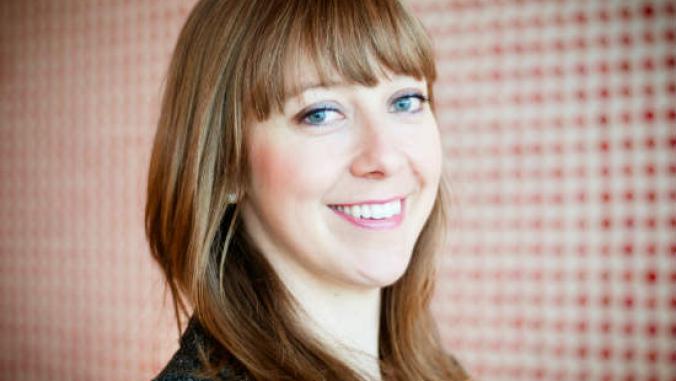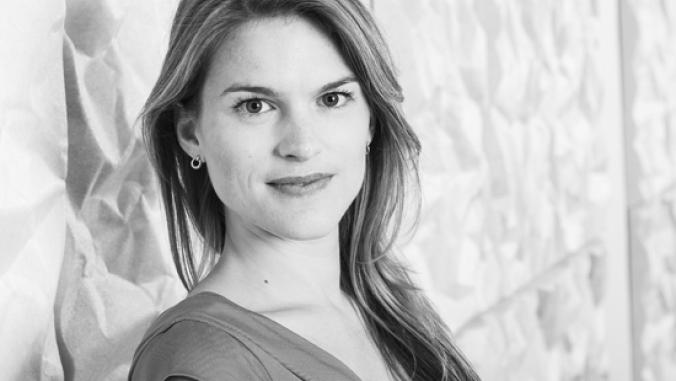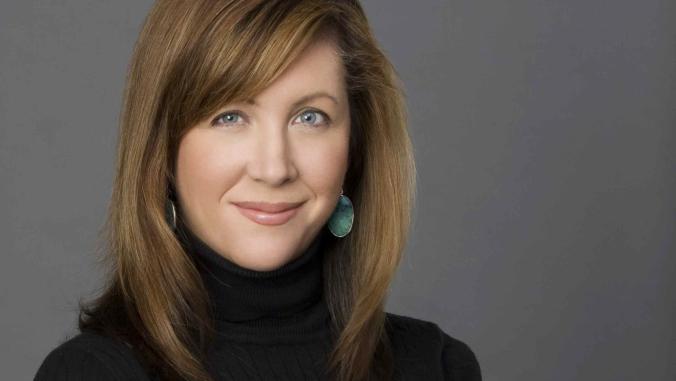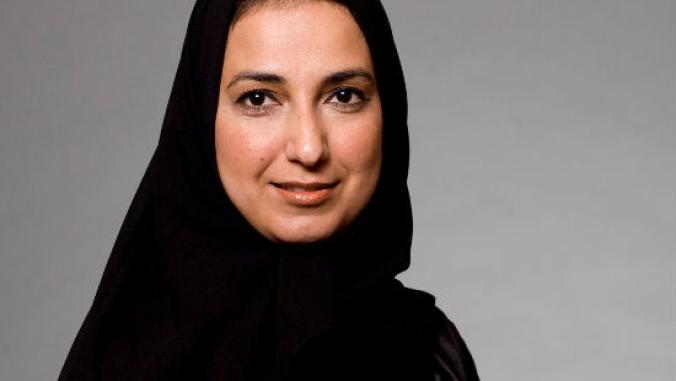How She Leads: Cristina Amorim, Life Technologies
<p>The company's CSO became interested in sustainability after witnessing terrible pollution in the Amazon rainforest.</p>

Image courtesy of Life Technologies
How She Leads is a regular feature on GreenBiz spotlighting the career paths of women who have moved into influential roles in sustainable business. In this edition, Maya Albanese interviews Cristina Amorim, chief sustainability officer of Life Technologies.
Amorim, a native of Sao Paulo, Brazil, leads a team that has successfully executed sustainability-inspired growth strategies based on design-for-environment and green chemistry principles. Rather than working to meet compliance standards, she has taken a holistic approach by considering the full lifecycle of the company's products, packaging, services and processes, to create long-term value.
In 2012 Amorim was named Sustainability Executive of the Year at the Ethical Corp.'s annual Responsible Business Forum awards ceremony. Here she explains what drew her to sustainability and how her team has added value to the $3.7 billion biotech company and its bottom line.
Maya Albanese: How did you get into the biotechnology field?
Cristina Amorim: So far, my life has gone in a series of getting a degree and then making a career move. First, I used my degree in chemical engineering to start work in the oil fields off the coast of Southern California. I was one of very few women working out there. I was helping the refineries account for their "fugitive air emissions" and doing "hazard" studies." At that time, it was already required that they account for hydrocarbon leaks. Then, I went back to school for a Master's in environmental engineering. After school, I went to work in environmental health & safety for Allergan, the maker of Botox. Fifteen years ago, there weren't roles entitled "sustainability," but rather, EH&S roles have evolved into sustainability roles today. After completing my MBA at UCLA, I got a call from a recruiter that was looking for this sustainability role at Life Technologies.
MA: Was there an "a-ha moment" that inspired you to work in sustainability?
CA: I have always had a passion for water, maybe because I grew up in Brazil when the river had everything you can imagine floating in it: cars, clothing, trash. I knew that the No. 1 cause of child mortality was contaminated water. In California, water is also a huge issue; there is not enough. Then, when I was working for one of the big oil firms on their pumping station in Peru, I could see them pumping oil and burning whole patches of Amazon rainforest. Wastewater discharge with sulfur dioxide in it was just being dumped into the jungle. Nobody was looking at this, nobody was watching. And I thought, "We can't fuel humanity's needs for progress at the expense of nature. There's got to be a better way."
MA: How does your position fit into the overall corporate structure?
CA: I am on the global operations team. This is a good place for my role, because most of the impact that a sustainability professional can have is in this space: buildings, procurement, shipping and manufacturing. At Life Tech, we ship more than 18,000 packages a day and 50 percent of our products are very temperature sensitive. We operate on what one calls a "cold chain." We are the largest shipper of dry ice via FedEx in the United States. We also operate very large walk-in freezers in energy-intensive warehouses. We realized that the Styrofoam and dry ice are just left for our customers as garbage in the end. So now, we're constantly looking at whether we really need to assemble a product in advance, or if we can ship it compact or at room temperature, so we wouldn't have to use gel pack, dry ice or a cooler.
MA: What are your top responsibilities in this role?
CA: Our No. 1 responsibility is to ensure the safety of our employees as well as that of our customers, and that the products we make are used properly and disposed of safely. Environmental protection is also a public safety issue. We don't want pollution escaping our operations because we want a healthy air, land and water. We have a very large responsibility to reduce our operational costs, and this is mainly done through our environmental work. This covers issues like energy, water and waste, as well as our effort to go paperless in all our offices, product manuals and marketing materials.
MA: How have some of your initiatives helped Life Tech save money and improve its bottom line?
CA: We call them "eco-efficiencies: energy, water, waste. Energy is the most profitable resource to reduce. Today, we are 50 percent more energy efficient than we were six years ago. If we hadn't done any of our energy conservation work, instead of having a $20 million energy bill, it would be $40 million. The business case is that simple. It's pretty remarkable how much we have grown while saving so much money. Another area of cost savings has been the reformulation of our products, so they no longer have to be shipped in dry ice in a cooler made of expanded polystyrene, one of the worst materials to use. If you can get a tub of ice cream from the grocery store to your home freezer, then our products also should be able to withstand some nonrefrigerated time before our customers put them into their freezers. One product conversion alone has saved our company $2.1 million in packaging materials and freight, and eliminated 200,000 coolers from circulation each year as a result of our first product reformulations.
MA: Who are Life Tech's main customers, and why would environmental and social responsibility be of concern to them?
CA: Our customers are life scientists in academia, pharmaceutical companies, the government (NIH, CDC and police departments for DNA identification). Over 90 percent of Life Science laboratories in the world will be using our products. By the sheer nature of what our customers are doing — trying to improve water quality worldwide, make biofuels from plants and cure infectious diseases — they are people who want their work to change the world, so they care about these issues. I think most people would say they want useful products and don't want garbage. Our excess leftover packaging just becomes "branded garbage." It is an embarrassment to see piles of leftovers with our name all over it in all of these laboratories.
MA: Why is raw material toxicity an important issue for your company, and how have you addressed it effectively?
CA: When you bring any toxic material through your door, you must make sure your employees can handle it safely. You may need to have a permit to have the chemical inside your walls. You may be taxed for it. You may not be allowed to ship it. We have to mark every dangerous chemical (DG) and pay more, so why wouldn't the business want to eliminate them? We don't want to have to take back the DGs either. Don't forget that every time you bring in a toxic material, you also must deal with hazardous waste later, so you are paying for it twice. This is economically inefficient and a huge money drain on any organization.
MA: What is one obstacle you have overcome in your work?
CA: How do we move what others see as "treehugging" to something solid that will add value to the business? It was a challenge to demonstrate that we're not treehuggers at all and create a paradigm shift. I realized that I must connect at a completely different level with the CFO and finance department. In the past, the finance people may just have been the "people who handed me my budget." But they are so much more than this. They need to help us back up our environmental initiatives. Now EH&S and finance have a partnership. I have lunch with them. I work out with them. All of EH&S has to take Finance 101 now, a workshop we created internally, so the EH&S team could speak in financial terms. Everyone can understand $1 million, even if they can't wrap their brains around the significance of a ton of carbon.
MA: What are you especially proud of accomplishing in your current role?
CA: I went from hearing, "Oh, here comes the green team" to being considered a legitimate seat at the executive table adding business value. It took 18 months of campaigning to make this important transition. We worked hard to anchor our claims on hard data. They don't want to see ideals like "pollution is not a legacy we want to leave behind for our children." Instead, they want to hear, "Here's the data that shows this is what we must be doing to save money."
Image courtesy of Life Technologies Corp.





